 | TODAY IN SCIENCE HISTORY
NEWSLETTER - 2 JUNE |
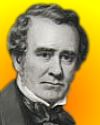 On 2 Jun 1891, John Hawkshaw died, an English civil engineer noted for his work on the Charing Cross and Cannon Street railways among many other projects. On 2 Jun 1891, John Hawkshaw died, an English civil engineer noted for his work on the Charing Cross and Cannon Street railways among many other projects.
An Obituary for John Hawkshaw in the Engineering News (1891), tells of the many types of projects in which he was involved in his lifetime, and outlines how he is another example of a highly productive Victorian engineer.
|
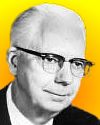 On 2 Jun 1903, Robert Morris Page was born, the American physicist who invented the technology for pulse radar. Today's Science Store pick is: The Origin of Radar, by Robert Morris Page, who tells the full story of the discovery and development of radar, the most valuable weapon of World War II. He starts with the accidental discovery of radar when in 1922 A.H. Taylor and L.C. Young noticed that ships on the Anacosta River interrupted radio transmission and follows the development of pulse radar to its present applications in navigation, weather forecasting, astronomy and other technical fields. Woven into the story is a clear explanation of radar equipment and the physical principles involved. Available Used from $1.49 (as of time of writing). On 2 Jun 1903, Robert Morris Page was born, the American physicist who invented the technology for pulse radar. Today's Science Store pick is: The Origin of Radar, by Robert Morris Page, who tells the full story of the discovery and development of radar, the most valuable weapon of World War II. He starts with the accidental discovery of radar when in 1922 A.H. Taylor and L.C. Young noticed that ships on the Anacosta River interrupted radio transmission and follows the development of pulse radar to its present applications in navigation, weather forecasting, astronomy and other technical fields. Woven into the story is a clear explanation of radar equipment and the physical principles involved. Available Used from $1.49 (as of time of writing). Yesterday's pick: Mavericks, Miracles, and Medicine: The Pioneers Who Risked Their Lives to Bring Medicine into the Modern Age, by Julie M. Fenster.
For picks from earlier newsletters, see the Today in Science Science Store home page. | |
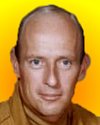 | "Whoopie! Man, that may have been a small one for Neil but that's a long one for me." (Commenting as the third man to step on the lunar surface, though of smaller stature than Neil Armstrong.) - Pete Conrad, American astronaut (born 2 Jun 1930)  |
| Before you look at today's web page, see if you can answer some of these questions about the events that happened on this day. Some of the names are very familiar. Others will likely stump you. Tickle your curiosity with these questions, then check your answers on today's web page. |
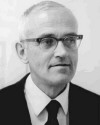 |  Clair Cameron Patterson, born 2 June 1922, was a U.S. geochemist who in 1953 made the first precise measurement of the Earth's age, 4.55 billion years. He pioneered in three major areas of geochemical research. (1) He provided the first reliable ages of the earth and meteorites (1962), using analysis of the isotopic compositions and concentrations of a certain element in terrestrial materials and meteorites. This has been a benchmark for researchers. (2) He established the patterns of isotopic evolution of this same element on earth, by analysis of critical rocks, sediments and waters of the planet. Thus he created a powerful tool for identifying, tracing and evaluating the nature of the major geochemical reservoirs in the crust, mantle, and oceans. (3) He studied environmental pollution by this element. Clair Cameron Patterson, born 2 June 1922, was a U.S. geochemist who in 1953 made the first precise measurement of the Earth's age, 4.55 billion years. He pioneered in three major areas of geochemical research. (1) He provided the first reliable ages of the earth and meteorites (1962), using analysis of the isotopic compositions and concentrations of a certain element in terrestrial materials and meteorites. This has been a benchmark for researchers. (2) He established the patterns of isotopic evolution of this same element on earth, by analysis of critical rocks, sediments and waters of the planet. Thus he created a powerful tool for identifying, tracing and evaluating the nature of the major geochemical reservoirs in the crust, mantle, and oceans. (3) He studied environmental pollution by this element.
 What was the element? What was the element? |
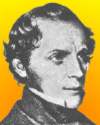 |  Nils Gabriel Sefstr�m, born 2 June 1787, was a Swedish chemist who discovered a new element. He examined iron ore after a mine manager had pointed out an interesting test. He was told, if a batch of was treated with hydrochloric acid and a black powder appeared, then the iron would be brittle. By further study he found this was not always true, for sometimes a black powder appeared from iron that was not brittle (1831). By analysis of the powder, although similar to chromium or uranium, he determined it was a new element. Sefstr�m named it after a Norse goddess. Nils Gabriel Sefstr�m, born 2 June 1787, was a Swedish chemist who discovered a new element. He examined iron ore after a mine manager had pointed out an interesting test. He was told, if a batch of was treated with hydrochloric acid and a black powder appeared, then the iron would be brittle. By further study he found this was not always true, for sometimes a black powder appeared from iron that was not brittle (1831). By analysis of the powder, although similar to chromium or uranium, he determined it was a new element. Sefstr�m named it after a Norse goddess.
 Can you name this element? Can you name this element? |
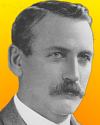 |  John Frank Stevens (1853-1943) was an American civil engineer and railroad executive who, as chief engineer of one of the nation's biggest projects ever from late 1905 to April 1907, laid the basis for that project's successful completion. He was recognized as the world's foremost railway civil engineer when he took over in 1905. The fundamental problem that he faced was one of restoring confidence and morale. A yellow fever epidemic, followed by the unexpected resignation of the first Chief Engineer, John F. Wallace, had made left project in a state of chaos. He found no order, no plan on the job. He planned the main features, turned the project around, and left it destined for successful completion. John Frank Stevens (1853-1943) was an American civil engineer and railroad executive who, as chief engineer of one of the nation's biggest projects ever from late 1905 to April 1907, laid the basis for that project's successful completion. He was recognized as the world's foremost railway civil engineer when he took over in 1905. The fundamental problem that he faced was one of restoring confidence and morale. A yellow fever epidemic, followed by the unexpected resignation of the first Chief Engineer, John F. Wallace, had made left project in a state of chaos. He found no order, no plan on the job. He planned the main features, turned the project around, and left it destined for successful completion.  What project did he rescue from chaos? What project did he rescue from chaos? |
|  On 2 Jun 1686, the publication of one of the great books in science was arranged in London at the Royal Society. The minutes of the meeting record that to publish this work of a famous scientist, the astronomer Edmund Halley would "undertake the business of looking after it and printing it at his own charge." On 2 Jun 1686, the publication of one of the great books in science was arranged in London at the Royal Society. The minutes of the meeting record that to publish this work of a famous scientist, the astronomer Edmund Halley would "undertake the business of looking after it and printing it at his own charge."
 What book by what scientist was to be published? |
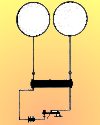 |  On 2 June of a certain year, the first radio patent was issued to Guglielmo Marconi in England for his wireless telegraphy apparatus for "Improvements in Transmitting Electrical Impulses and Signals, and in Apparatus Therefor." On 2 June of a certain year, the first radio patent was issued to Guglielmo Marconi in England for his wireless telegraphy apparatus for "Improvements in Transmitting Electrical Impulses and Signals, and in Apparatus Therefor."
 In what decade was it issued? |

|  On 2 Jun 1875, Alexander Bell and his assistant had been working on the "harmonic telegraph". In the transmitter room, his assistant had been trying to free a reed that had been too tightly wound to the pole of its electromagnet, when it produced a twang. Bell, who had been working in the receiving room heard the twang. He realized that now his dream of speech transmission must be a possibility, for the complex overtones and timbre of the twang he had just heard had a lot in common with the sound of the human voice. The next day, they continued tinkering on their experiment, anxious to achieve more ambitious results. On 2 Jun 1875, Alexander Bell and his assistant had been working on the "harmonic telegraph". In the transmitter room, his assistant had been trying to free a reed that had been too tightly wound to the pole of its electromagnet, when it produced a twang. Bell, who had been working in the receiving room heard the twang. He realized that now his dream of speech transmission must be a possibility, for the complex overtones and timbre of the twang he had just heard had a lot in common with the sound of the human voice. The next day, they continued tinkering on their experiment, anxious to achieve more ambitious results.
 Can you name this assistant? |
When you have your answers ready to all the questions above, you'll find all the information to check them, and more, on the June 2 web page of Today in Science History. Or, try this link first for just the brief answers.
Fast answers for the previous newsletter for June 1: jet aircraft engine; Sadi Carnot; hovercraft; heart; 3 kelvin (3 K); Thomas Edison; Antoine Lavoisier.
|
 If you enjoy this newsletter, the website, or wish to offer encouragement or ideas, please send feedback by using your mail reader Reply button. If you enjoy this newsletter, the website, or wish to offer encouragement or ideas, please send feedback by using your mail reader Reply button. |
--
If you do not want to receive any more newsletters,
Unsubscribe To update your preferences and to unsubscribe visit
this link 


 On 2 Jun 1891, John Hawkshaw died, an English civil engineer noted for his work on the Charing Cross and Cannon Street railways among many other projects.
On 2 Jun 1891, John Hawkshaw died, an English civil engineer noted for his work on the Charing Cross and Cannon Street railways among many other projects.

 Clair Cameron Patterson, born 2 June 1922, was a U.S. geochemist who in 1953 made the first precise measurement of the Earth's age, 4.55 billion years. He pioneered in three major areas of geochemical research. (1) He provided the first reliable ages of the earth and meteorites (1962), using analysis of the isotopic compositions and concentrations of a certain element in terrestrial materials and meteorites. This has been a benchmark for researchers. (2) He established the patterns of isotopic evolution of this same element on earth, by analysis of critical rocks, sediments and waters of the planet. Thus he created a powerful tool for identifying, tracing and evaluating the nature of the major geochemical reservoirs in the crust, mantle, and oceans. (3) He studied environmental pollution by this element.
Clair Cameron Patterson, born 2 June 1922, was a U.S. geochemist who in 1953 made the first precise measurement of the Earth's age, 4.55 billion years. He pioneered in three major areas of geochemical research. (1) He provided the first reliable ages of the earth and meteorites (1962), using analysis of the isotopic compositions and concentrations of a certain element in terrestrial materials and meteorites. This has been a benchmark for researchers. (2) He established the patterns of isotopic evolution of this same element on earth, by analysis of critical rocks, sediments and waters of the planet. Thus he created a powerful tool for identifying, tracing and evaluating the nature of the major geochemical reservoirs in the crust, mantle, and oceans. (3) He studied environmental pollution by this element. What was the element?
What was the element?
 Nils Gabriel Sefstr�m, born 2 June 1787, was a Swedish chemist who discovered a new element. He examined iron ore after a mine manager had pointed out an interesting test. He was told, if a batch of was treated with hydrochloric acid and a black powder appeared, then the iron would be brittle. By further study he found this was not always true, for sometimes a black powder appeared from iron that was not brittle (1831). By analysis of the powder, although similar to chromium or uranium, he determined it was a new element. Sefstr�m named it after a Norse goddess.
Nils Gabriel Sefstr�m, born 2 June 1787, was a Swedish chemist who discovered a new element. He examined iron ore after a mine manager had pointed out an interesting test. He was told, if a batch of was treated with hydrochloric acid and a black powder appeared, then the iron would be brittle. By further study he found this was not always true, for sometimes a black powder appeared from iron that was not brittle (1831). By analysis of the powder, although similar to chromium or uranium, he determined it was a new element. Sefstr�m named it after a Norse goddess.  Can you name this element?
Can you name this element?
 John Frank Stevens (1853-1943) was an American civil engineer and railroad executive who, as chief engineer of one of the nation's biggest projects ever from late 1905 to April 1907, laid the basis for that project's successful completion. He was recognized as the world's foremost railway civil engineer when he took over in 1905. The fundamental problem that he faced was one of restoring confidence and morale. A yellow fever epidemic, followed by the unexpected resignation of the first Chief Engineer, John F. Wallace, had made left project in a state of chaos. He found no order, no plan on the job. He planned the main features, turned the project around, and left it destined for successful completion.
John Frank Stevens (1853-1943) was an American civil engineer and railroad executive who, as chief engineer of one of the nation's biggest projects ever from late 1905 to April 1907, laid the basis for that project's successful completion. He was recognized as the world's foremost railway civil engineer when he took over in 1905. The fundamental problem that he faced was one of restoring confidence and morale. A yellow fever epidemic, followed by the unexpected resignation of the first Chief Engineer, John F. Wallace, had made left project in a state of chaos. He found no order, no plan on the job. He planned the main features, turned the project around, and left it destined for successful completion.  What project did he rescue from chaos?
What project did he rescue from chaos?  On 2 Jun 1686, the publication of one of the great books in science was arranged in London at the Royal Society. The minutes of the meeting record that to publish this work of a famous scientist, the astronomer Edmund Halley would "undertake the business of looking after it and printing it at his own charge."
On 2 Jun 1686, the publication of one of the great books in science was arranged in London at the Royal Society. The minutes of the meeting record that to publish this work of a famous scientist, the astronomer Edmund Halley would "undertake the business of looking after it and printing it at his own charge." What book by what scientist was to be published?
What book by what scientist was to be published?
 On 2 June of a certain year, the first radio patent was issued to Guglielmo Marconi in England for his wireless telegraphy apparatus for "Improvements in Transmitting Electrical Impulses and Signals, and in Apparatus Therefor."
On 2 June of a certain year, the first radio patent was issued to Guglielmo Marconi in England for his wireless telegraphy apparatus for "Improvements in Transmitting Electrical Impulses and Signals, and in Apparatus Therefor." In what decade was it issued?
In what decade was it issued? 
 On 2 Jun 1875, Alexander Bell and his assistant had been working on the "harmonic telegraph". In the transmitter room, his assistant had been trying to free a reed that had been too tightly wound to the pole of its electromagnet, when it produced a twang. Bell, who had been working in the receiving room heard the twang. He realized that now his dream of speech transmission must be a possibility, for the complex overtones and timbre of the twang he had just heard had a lot in common with the sound of the human voice. The next day, they continued tinkering on their experiment, anxious to achieve more ambitious results.
On 2 Jun 1875, Alexander Bell and his assistant had been working on the "harmonic telegraph". In the transmitter room, his assistant had been trying to free a reed that had been too tightly wound to the pole of its electromagnet, when it produced a twang. Bell, who had been working in the receiving room heard the twang. He realized that now his dream of speech transmission must be a possibility, for the complex overtones and timbre of the twang he had just heard had a lot in common with the sound of the human voice. The next day, they continued tinkering on their experiment, anxious to achieve more ambitious results. Can you name this assistant?
Can you name this assistant? If you enjoy this newsletter, the website, or wish to offer encouragement or ideas, please send feedback by using your mail reader Reply button.
If you enjoy this newsletter, the website, or wish to offer encouragement or ideas, please send feedback by using your mail reader Reply button. 

Δεν υπάρχουν σχόλια:
Δημοσίευση σχολίου